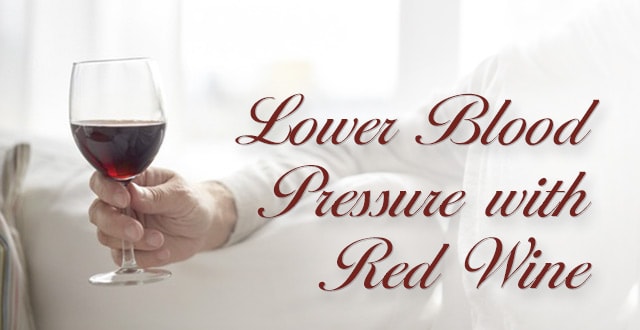By now, many people have heard that red wine may provide positive health benefits when consumed, especially when it comes to heart health and blood pressure levels. As with most things that sound too good to be true, though, people wonder “What’s the catch?” “How much red wine is the right amount?” “How often should I drink it to get the benefits of reducing my blood pressure?” Consuming red wine can be satisfying, yet tricky to determine if that sip you took is enough or if that bottle you had at dinner was too much. While the thought of drinking alcohol to get healthier sounds fun, knowing why and how to use it to your benefit is even more of a reason to raise your glass.
Why Does Red Wine Lower Blood Pressure?
The American Heart Association defines high blood pressure as “the force of blood pushing against blood vessel walls. High blood pressure (HBP) means the pressure in your arteries is higher than it should be.” So how exactly does red wine stop this from happening? Grape skins used to make wine contain a substance called resveratrol, which is believed to have a positive impact on your blood pressure. Red wine contains these antioxidants called polyphenols (resveratrol is the main one) that help protect the lining of blood vessels in your heart. These antioxidants help prevent damage to your blood vessels and prevent blood clots, which all help to reduce high blood pressure. In fact, a study done by Harvard concluded that “In moderation… drinking red wine increases HDL (“good” cholesterol). It also protects against artery damage, which may lower blood pressure and help prevent heart disease.” Health.Harvard.edu.
How to Use Red Wine to Lower Blood Pressure
It’s Simple!
- Men, consume a maximum of two glasses of red wine each day.
- Women, consume a maximum of one glass of red wine each day.
- Always drink in moderation.
That’s it! This is even better news if you are above 50 years of age because you have more of a chance for this simple recipe to work. Dr. Arthur Klatsky, a senior consultant in cardiology at Kaiser Permanente Northern California, states that “Adults above the age of 50 are at much higher risk of heart attack and stroke than they are of any possible harmful effects to light-moderate drinking…So even if they have high blood pressure, they could see the health benefit from something like a glass of red wine a day.” You would also want to consider decreasing your sodium intake, maintaining a healthy weight, exercising regularly, quitting tobacco use, and reducing your stress. These steps all lead to a lower blood pressure and a healthier heart.
What to Do Next
Remember to be cautious of other health conditions you might have, or any hereditary ones as well. Alcoholism, liver disease, and heart disease are all hereditary diseases, which are reasons to not start drinking red wine. However, if your genes are free from any of these diseases, then you are in the clear for a glass or two a day. So talk to your doctor about your high blood pressure to determine what red wine consumption levels are safest for you.
If your doctor does not give you the OK to drink alcohol, what are some other options? Webmd states that even drinking non-alcoholic red wine can help reduce your blood pressure. According to an article on their site, one study found that “three glasses of nonalcoholic red wine a day over a month led to a significant drop in blood pressure in men with heart disease risk factors”. This is due to that resveratrol from the red grapes that are used to make both alcoholic and non-alcoholic red wine.
So, go ahead and pour yourself a glass of the red wine that you prefer, and you will be you on your way to a healthier heart and lower blood pressure! For more information on the health benefits of red wine, visit healthywildandfree.

